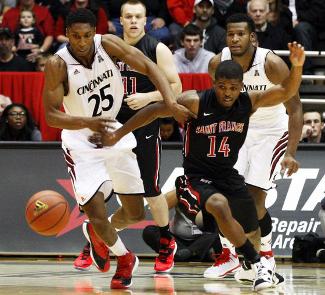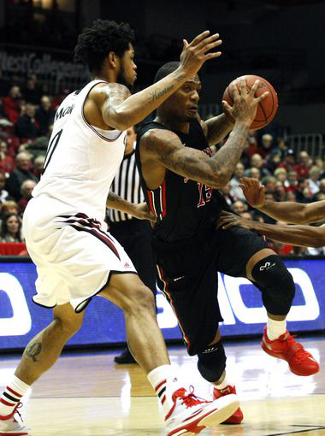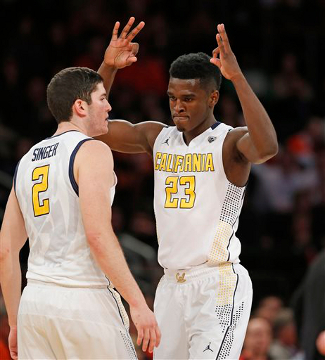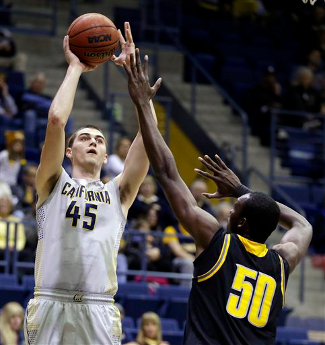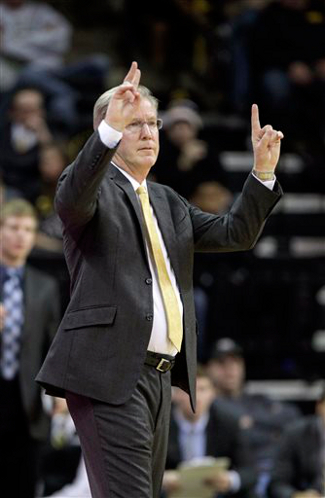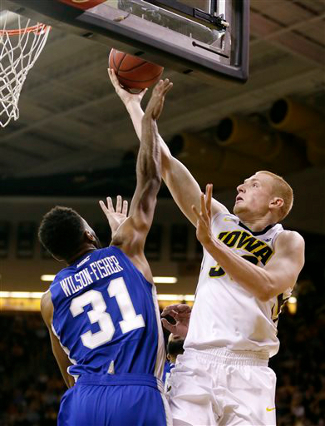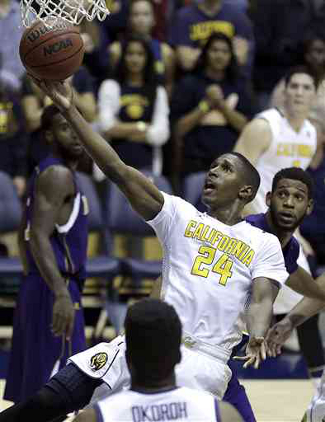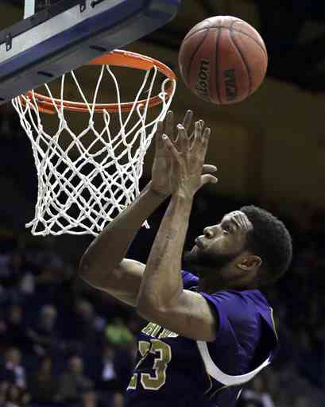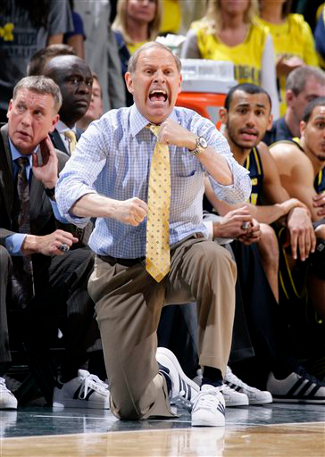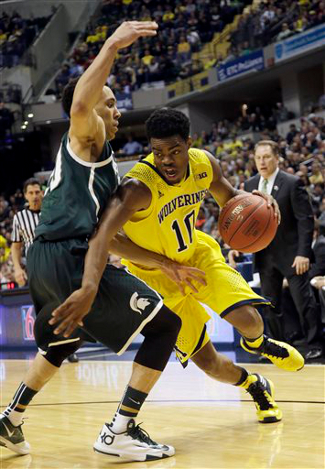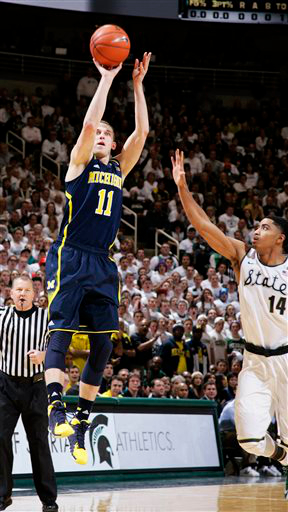Frank Erwin Center | Austin, TX | Tip: 7 P.M. CT | TV: Longhorn Network Vegas: OFF | KenPom: Texas, 69-50 (98%) Fresh off a championship in the 2K Classic, the Texas Longhorns return to action tonight at the Frank Erwin Center, having climbed three spots in this week’s AP poll. With tough road games coming in the next two weekends against UConn and Kentucky, the two teams who played in last year’s national championship game, Texas will be taking it easy against some lighter competition tonight when they square off with St. Francis. The Longhorns will be without point guard Isaiah Taylor for a second consecutive game, with the most recent reports now labeling his timetable for return as “indefinite.” On Friday, ESPN’s Jeff Goodman quoted sources that projected Taylor’s absence to be four to six weeks. Either way, it’s clear that Taylor will be unavailable for the team’s biggest non-conference games in Storrs and Lexington, and the sophomore could see his rehab stretch into the beginning of conference play. Javan Felix will be the man tasked with filling Taylor’s sneakers, and although he has more than enough experience as the starting point guard from the 2012-13 campaign, it will be a change of roles for Felix. The New Orleans native played more of a combo guard role on last year’s team, and was asked to take open shots any time he saw them. Felix complied, taking more than 29% of his team’s shots when he was on the floor, by far the highest percentage on the team, and one that ranked him 138th nationally. With this year’s team having such a dominant presence inside, Felix will have to serve as much more of a facilitator in Taylor’s absence. He will also need to ensure that his shot selection is judicious enough to make opponents think twice about packing the lane. Last year, Felix shot just 35.8% from the floor, so indiscriminate shooting at that same rate will only serve to encourage opponents to sag off and neutralize the Texas advantage down low. By the numbers St. Francis University — not to be confused with St. Francis College, which aso plays in the Northeast Conference — comes into tonight’s game with a 2-2 mark, having notched one of those wins against Division III Keystone College. The Red Flash have one of the most experienced teams in the country, having returned all five starters from last year’s team. Ken Pomeroy shows the Red Flash as having a team average of 2.07 years of experience, the 58th-highest average in the country. This is a group that has played together for a long time and is very familiar with each other, but they’re also very familiar with losing. Last year’s team logged a 10-21 mark, and the program has won just 30 total games in the last four seasons.
St. Francis has struggled with turnovers This year, the numbers are not pretty for the Red Flash. Offensively, their adjusted efficiency ranks as 44th-worst in Division I. That low number is driven by an inability to control the basketball and to win second chances with their very small roster. St. Francis has turned it over on 28% of their possessions, and have only reclaimed 19.8% of their missed shots. Those percentages are ranked 10th-worst and 11th-worst in Division I this season. With the offense struggling so mightly, it shouldn’t come as too much of a surprise that the Red Flash like to slow things down. The team is averaging an adjusted 63.8 possessions per game, one of the 50 slowest paces in D-I. Despite being severely undersized, St. Francis has managed to perform admirably on the defensive end. The Red Flash are allowing an adjusted 0.990 points per possession, just slightly worse than the national average. They are actually forcing a turnover on roughly one out of every four possessions, keeping opponents off the glass with the 28th-best defensive rebounding rate in the country, and are not sending opponents to the line. The team’s defensive free-throw rate of 23.1% is currently ranked 21st nationally. Meet the Red Flash Although Texas has a handful of games against low majors that will likely be severe mismatches, this will probably be the one with the biggest disparity in size. The Red Flash have just one player listed at 6’7″ who plays significant minutes, and a trio of 6’6″ guys have seen time so far this year. Beyond that, there’s a sudden drop-off in size, with two members of the core rotation checking in under six-foot. One of those diminutive starters is 5’11” sophomore point guard Malik Harmon (No. 1), who was the Rookie of the Year in the NEC last year. Although he has assisted on more than 15% of his team’s baskets when he’s been on the floor in their three D-I games, he has also posted an ugly 27.2% turnover rate. Joining Harmon in the backcourt is junior guard Greg Brown (No. 12), who coach Rob Krimmel says is one of the NEC’s best defenders. Despite starting all four games, Brown is averaging just under 26 minutes per game, but has been the team’s best facilitator when he’s on the court, dishing dimes on more than a quarter of the team’s buckets.
Earl Brown is the playmaker for St. Francis To keep announcers and fans confused, the best player for the Red Flash is also named Brown — Earl Brown (No. 15). The 6’6″ wing has a quick first step and is a very good passer, but has a hard time carrying a very bad offense, with opponents able to focus most of their energy on him. Despite the added attention, Earl does a good job creating his own looks and getting to the line, but he does not convert those opportunities, having made just 50% of his free-throw attempts so far this season. Senior Ollie Jackson (No. 22) is a 6’3″ guard who has also started every game, yet plays less than half of the team’s minutes. Although he played at the four against NEC opponents last season, Jackson stayed in his more natural role on the perimeter in the team’s season-opening loss at Cincinnati. He is just 1-for-10 from the field so far this season, and has a turnover rate just shy of 30%. Rounding out the starting five is Ronnie Drinnon (No. 40), the team’s big man at 6’7″. Against a much bigger Cincinnati team, Drinnon actually did a respectable job in the post, showing nice touch on his hook shot, while also adding a turnaround jumper in the midrange. His rebounding numbers are ranked in the Top 500 on both ends of the court, so the Red Flash will need him to avoid foul trouble and stay on the court against Texas tonight. The Red Flash have a very small rotation, with just two reserves seeing significant minutes. Junior Ben Millaud-Meunier (No. 11) is known as the team’s sharpshooter, although his 37.5% mark from long range is currently second on the team, behind Harmon’s 43.8%. Cincinnati chased Millaud-Meunier off the arc a few times, and he struggled to make them pay with his midrange game. Senior Dominique Major rounds out the rotation, providing quality on-ball defense. He was aggressive with the bounce against Cincinnati, but preferred to look for teammates once he found a crack. Most of Major’s shots come from outside, but he’s yet to find much success this season, having connected on just 28.6% of his looks. Keys to the Game This is one of those match-ups where our “Keys to the Game” section is something of a misnomer. Although St. Francis will likely slow the pace enough to keep tonight’s score from getting too ugly, there’s no reason why Texas should have any problems at all in this game. The Longhorns could likely win this one with a walk-on or two playing significant minutes, so these “keys” are simply ways that Texas can make the final margin even bigger. 1. Exploit the size advantage – With St. Francis having just one player at 6’7″, the Longhorns could easily go inside on each and every play. Cincinnati was able to abuse the Red Flash in the high-low game, simply dropping entry passes right over the top of the undersized defenders. Texas should focus on good ball movement against a disciplined-but-undersized defense, with an eye towards finding great angles for post entry passes. 2. Turn up the pressure – The Longhorns have posted outstanding defensive numbers this season without forcing very many turnovers. St. Francis, meanwhile, has struggled with controlling the basketball, and looked terrified against backcourt pressure in the loss to Cincinnati. If Texas wants to have some game-speed practice with their traps and pressure looks, this would be a night in which that would result in quite a few extra possessions. 3. Dominate the glass – St. Francis typically doesn’t earn second chances, and that’s even the case against like-sized opponents. However, they have been able to keep opponents from winning back their own missed shots, a statistic that defies conventional logic. The Longhorns should not have a hard time owning the defensive glass tonight, but can also take away one of the few strengths for St. Francis if they are able to win back a good share of their own misses. |








